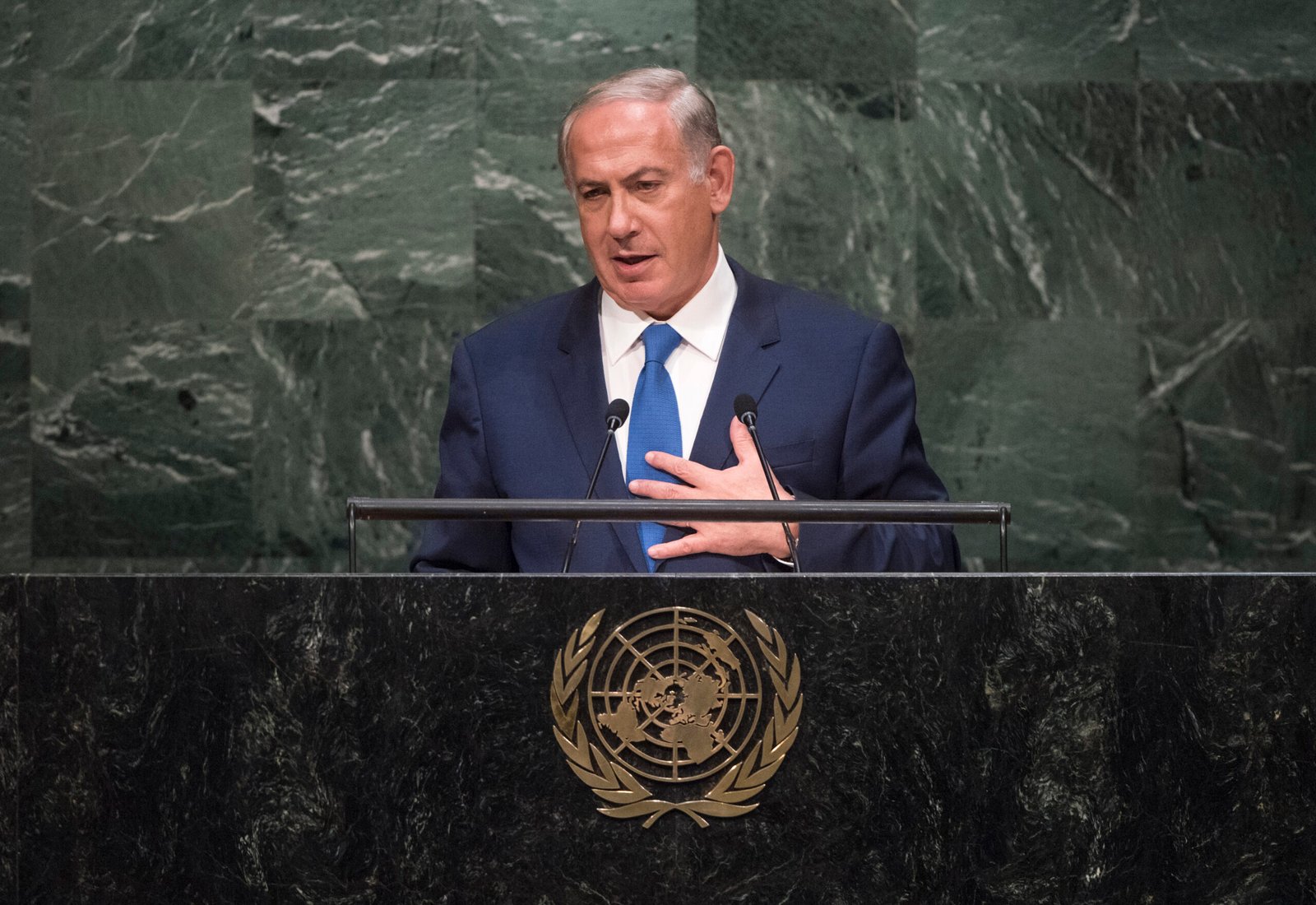World News
Fisker reveals all-electric Alaska pickup, 3 other EV prototypes on August 4, 2023 at 12:21 am

Fisker, the automotive startup-turned publicly traded company founded by famed automotive designer Henrik Fisker, revealed Thursday night a dizzying array of EV prototypes from a beefy pickup truck with an expandable bed, and grand tourer sports car with up to 600 miles of range to a souped-up, off-road version of its Ocean SUV and the mysterious PEAR vehicle that it plans to build with Foxconn.
The showcase, which was part of an event in Huntington Beach, California for investors and media, was the first time that Fisker has shown off all of its future vehicles in prototype form and laid out its expansive and ambitious future product plan. And Fisker is taking reservations for all of them.
“I think the traditional car industry really liked this idea about coming up with a new car every year or every second year, but I think we’re in a completely different time right now. You know, coming out of the COVID hangover,” Henrik Fisker told TechCrunch. “My strategy is, I kind of want to seize the moment. And rather than looking at COVID as something that’s gonna stop us or slow us down. I kind of want to accelerate. And the reason is that I believe that the entire pie of the market is up for grabs, probably in the next three years.”
While the EVs shown Thursday are only prototypes and the specifics are scarce, the company did share some new details that provide a clearer picture of what road — or roads — Fisker is taking.
Luxury pickup truck: Fisker Alaska
CEO Henrik Fisker has called the pickup the “Ferrari of pickups,” targeting other successful all-electric luxury pickups in the space, including Rivian’s highly popular Rivian R1T, the still-vaporware Tesla Cybertruck and the Ford F-150 Lightning.
The Alaska is built on a similar platform as the Ocean, but it’s been stretched slightly. Fisker calls the platform under the Alaska, the FT31. The company said the EV pickup will be built by automotive contract manufacturer Magna Steyr in Europe at the same plant as the Ocean.
Fisker said Thursday that the Alaska will get up to 340 miles of all-electric range along with some unique features, including a “big gulp” cupholder and water bottle, an extendable bed that goes from a 4.5 feet to 7.5 feet with the push of a button, and various cubbies and storage bins, including one for a cowboy hat.
The extendable bed has an interesting feature that might be attractive to campers. The back window of the cab and rear wall can be dropped, allowing the cabin to open up to the truck bed and lengthening the entire area (when the tailgate is down) to 9 feet, 6 inches. This feature, which Fisker calls the Houdini Trunk, would offer a sort of sleeping platform for owners or could be used to carry longer items.
Henrik Fisker noted in an interview with TechCrunch that the company is considering adding “all kinds of fun stuff” for the Alaska truck to go head-to-head with the Rivian R1T, a pickup known for its thoughtful accessories like the hidden flashlight, Bluetooth speaker and since discontinued camp kitchen.
Fisker said that the Alaska will come to market in 2024 and have a starting price of $45,400 before incentives. With incentives, Fisker says that the Alaska will cost $37,900. Reservations for the Fisker Alaska opened this evening with deliveries taking place sometime in 2025, according to the company.
The PEAR
Alongside the Alaska, Fisker showed off the PEAR for the first time.
The PEAR, which stands for Personal Electric Automotive Revolution, was going to be built in conjunction with Foxconn at the Lordstown Motors plant in Ohio. Lordstown Motors has since filed for bankruptcy and sued against Foxconn. It’s unclear if the PEAR will still be built at that location.
Fisker says that the $29,900 (before incentives) PEAR gets up to 300 miles of range in its dual motor, all-wheel drive form and calls the vehicle a “fully connected mobility device” complete with on-board supercomputers that reportedly handle as much as 6.2 teraflops of data. The supercomputers have been built in-house by Fisker and are called Fiskerblades.
The range for the Pear is roughly 50 miles less than other high-volume EVs like the Hyundai Ioniq 5 and 6, both of which are priced in the $40,000 range, but no automaker has yet been able to build and offer an EV for under $30,000.
To keep the price of the PEAR low, Fisker is going for the volume play, noting that once the Lordstown plant ramps up production, the company plans to build 250,000 PEARs per year at that location. At tonight’s event, Henrik Fisker said that he eventually hopes to build 1 million Pears per year at factories around the world, including those in the U.S., China, Europe and India.
The Pear is built on what Fisker calls the SLV1, or Simple Light Volume platform, and will have an all-steel body and frame. The company said it has used an internal development process to make manufacturing more efficient and lower costs. For instance, many of the parts inside the smaller EV crossover are interchangeable and the armrests on the doors are exactly the same.
Fisker said it was able to take out 35% of the parts in order to lower cost and make it easier and faster to assemble.
Henrik Fisker confirmed that the Pear is done in terms of design and the company is currently going out to suppliers to get it built. Fisker said that the Pear will be coming in mid-2025.
One unique feature of the Pear is the rear tailgate which neither opens up or down like traditional tailgates. Instead, it slides down into the rear bumper and disappears. The company also refers to this as the “Houdini Trunk,” the same name it uses for a somewhat similar disappearing act in the pickup.
The Pear also comes with an option for a bench seat in the front, offering optional seating for three people, rather than two, increasing the compact passenger car capacity to as many as six people. The Pear also gets a lounge seating option, where the front seats can lay back and people can watch a movie on the center screen (the 5-passenger version gets the same 17-inch screen as the Ocean) from the rear when charging.
Reservations for the “urban EV,” which is about the size of a Subaru Crosstrek, opened in February of last year, The company says that they have more than 70,000 reservations for the Ocean and the PEAR, combined.
A sports convertible: Fisker Ronin
The all-electric Ronin, which was also shown in prototype form, marks Henrik Fisker’s return to the high-end luxury sports car market.
The vehicle — named after the movie Ronin that is famous for its multiple car chase scenes — is meant to showcase Fisker’s vision of the future supercar and serves as the technology “carrier” for all the other vehicles in the lineup.
To the CEO, that means a four-door, grand tourer with butterfly-winged doors, a coupe-like sloping roofline and tri-motor powertrain that produces more than 1,000 horsepower and can travel 0 to 60 miles per hour in around two seconds. The vehicle will be equipped with a retractable carbon fiber roof that can fit in its trunk.
If that’s not wild enough, Fisker says it will still be spacious enough to fit up to five people and their luggage.
The Ronin will be equipped with a new type of battery pack integrated into the body of the grand tourer with a targeted 600-mile range, Fisker said Thursday. If successful, that would put the Ronin’s range far ahead of any other EV on the market.
Production starts in the second half of 2024, according to the company.
Luxury off roader: Force E
The big surprise Thursday was the Force E, an off-roader version of the Ocean SUV — its only EV currently on the market.
Fisker widened the Ocean SUV with fenders, added a skid plate and eye-catching 33-inch wheels. The company, which called the Force E a “hardcore off-road package,” will be available in the first quarter of 2024.
Fisker, the automotive startup-turned publicly traded company founded by famed automotive designer Henrik Fisker, revealed Thursday night a dizzying array of EV prototypes from a beefy pickup truck with an expandable bed, and grand tourer sports car with up to 600 miles of range to a souped-up, off-road version of its Ocean SUV and the
Politics
Netanyahu’s UN Speech Triggers Diplomatic Walkouts and Mass Protests

What Happened at the United Nations
On Friday, Israeli Prime Minister Benjamin Netanyahu addressed the United Nations General Assembly in New York City, defending Israel’s ongoing military operations in Gaza. As he spoke, more than 100 delegates from over 50 countries stood up and left the chamber—a rare and significant diplomatic walkout. Outside the UN, thousands of protesters gathered to voice opposition to Netanyahu’s policies and call for accountability, including some who labeled him a war criminal. The protest included activists from Palestinian and Jewish groups, along with international allies.

Why Did Delegates and Protesters Walk Out?
The walkouts and protests were a response to Israel’s continued offensive in Gaza, which has resulted in widespread destruction and a significant humanitarian crisis. Many countries and individuals have accused Israel of excessive use of force, and some international prosecutors have suggested Netanyahu should face investigation by the International Criminal Court for war crimes, including claims that starvation was used as a weapon against civilians. At the same time, a record number of nations—over 150—recently recognized the State of Palestine, leaving the United States as the only permanent UN Security Council member not to join them.
International Reaction and Significance
The diplomatic walkouts and street protests demonstrate increasing global concern over the situation in Gaza and growing support for Palestinian statehood. Several world leaders, including Colombia’s President Gustavo Petro, showed visible solidarity with protesters. Petro called for international intervention and, controversially, for US troops not to follow orders he viewed as supporting ongoing conflict. The US later revoked Petro’s visa over his role in the protests, which he argued was evidence of a declining respect for international law.

Why Is This News Important?
The Gaza conflict is one of the world’s most contentious and closely-watched issues. It has drawn strong feelings and differing opinions from governments, activists, and ordinary people worldwide. The United Nations, as an international organization focused on peace and human rights, is a key arena for these debates. The events surrounding Netanyahu’s speech show that many nations and voices are urging new action—from recognition of Palestinian rights to calls for sanctions against Israel—while discussion and disagreement over the best path forward continue.
This episode at the UN highlights how international diplomacy, public protests, and official policy are all intersecting in real time as the search for solutions to the Israeli-Palestinian conflict remains urgent and unresolved.
News
Is a Nuclear-Powered Alien Spacecraft Flying Toward Earth?

A mysterious interstellar object speeding through our solar system has reignited debates about extraterrestrial technology — and whether Earth might currently be under quiet observation.
The object, known as 3I/ATLAS, is only the third confirmed interstellar visitor ever detected. Unlike ordinary comets, however, this cosmic traveler has baffled astronomers with its unusual brightness, strange trajectory, and lack of a visible cometary tail. While most scientists cautiously describe it as a natural body, one leading astrophysicist believes something much stranger is at play.

Harvard Scientist’s Bold Claim
Professor Avi Loeb of Harvard University, head of the Galileo Project, has suggested that 3I/ATLAS may in fact be a nuclear-powered alien spacecraft designed to test how humanity would respond to an interstellar visitor. He argues that its flight path is improbably precise, bringing it close to Mars, Venus, and Earth — a pattern highly unlikely to occur by chance.
Loeb also points out that telescope images show a glow inconsistent with ordinary dust behavior. Instead of trailing behind like a comet, the halo-like light appears to extend in unusual ways, sparking debate about whether the object could be emitting energy of its own.
Headed Toward Earth’s Neighborhood
3I/ATLAS is expected to make its closest approach in late 2025, passing near Mars before swinging by the inner solar system. Although Earth itself will be on the opposite side of the Sun when it comes closest, the alignment will still enable space-based observatories to capture sharper data.

Loeb has called on NASA and other agencies to use spacecraft already stationed near Mars or Jupiter — including the Juno mission — to take high-resolution photographs. He believes such efforts could reveal whether the interstellar object is truly natural, or the first technological probe humanity has ever encountered.
Should We Be Worried?
While most astronomers argue caution before jumping to alien conclusions, Loeb insists that scientific openness is key. “If it’s just a comet, we learn something new,” he said. “But if it’s a spacecraft, it would be the most important discovery in human history.”
For now, 3I/ATLAS remains a mysterious speck on astronomers’ charts, drifting closer with each passing day. Whether it proves to be a frozen remnant of another star system or something far more advanced, the interstellar visitor has already succeeded in one mission: reminding us how vast and unpredictable the universe really is.
News
AI Automation Could Cause Up to 20% Unemployment—A Workforce on the Brink

Stark Warning from Anthropic CEO Highlights Rapid Job Displacement Risk
The looming threat of widespread unemployment due to AI automation has sparked intense debate among experts, business leaders, and policymakers. Dario Amodei, CEO of Anthropic—the company behind the influential AI language model Claude—issued a stark warning that has sent shockwaves through corporate America:

“Up to half of all entry-level white collar jobs could disappear within the next one to five years, potentially pushing unemployment rates as high as 20% during this period.”
This dramatic forecast paints a picture of a rapid and unsettling transformation in the workforce, driven by AI technologies that can perform complex cognitive tasks.
Balancing Predictions: Worst-Case Scenarios vs. Moderate Impact
However, this forecast represents one end of a spectrum of expert predictions. While Amodei’s warning highlights the worst-case scenario driven by the swift adoption of AI agents capable of coding, analyzing data, drafting legal documents, and managing workflows around the clock, other analyses suggest a more moderate impact. For example, Goldman Sachs estimates that AI could temporarily displace about 6-7% of U.S. jobs, with unemployment rising by approximately half a percentage point during the adjustment period. Their research anticipates a more gradual transition with a mixture of job disruption and creation.

The Unprecedented Speed and Scope of AI-Driven Job Disruption
The truth likely lies somewhere in between. AI is advancing at unprecedented speed, and the scope of jobs affected spans far beyond blue-collar roles to white-collar positions that required college degrees and years of training. Entry-level roles such as customer service representatives, data entry clerks, junior analysts, and administrative assistants face the greatest near-term risk. Mid-level roles in accounting, marketing, law, and engineering could soon follow, with companies already laying off workers citing AI-driven efficiencies.
Preparing for an AI-Transformed Workforce: Adaptation Is Essential
Ultimately, the AI-driven job transformation is no longer a distant prospect but unfolding now. Whether unemployment spikes to 20% or stabilizes at lower levels depends on many factors, including business adoption rates, government policies, and the ability of workers to reskill. What is certain is that the workforce of tomorrow will look very different from today—and the time to prepare is right now.

 Business3 weeks ago
Business3 weeks agoDisney Loses $3.87 Billion as Subscription Cancellations Surge After Kimmel Suspension

 Entertainment3 weeks ago
Entertainment3 weeks agoWhat the Deletion Frenzy Reveals in the David and Celeste Tragedy

 Entertainment4 weeks ago
Entertainment4 weeks agoABC Suspends ‘Jimmy Kimmel Live!’ Indefinitely After Kirk Remarks

 Entertainment3 weeks ago
Entertainment3 weeks agoExecutive Producer Debut: How Celia Carver Created Festival Hit ‘Afterparty’

 Film Industry4 weeks ago
Film Industry4 weeks agoCan Movie Theaters Steal the Show from Streaming?

 Health3 weeks ago
Health3 weeks agoRussia Claims 100% Success With New mRNA Cancer Vaccine

 News4 weeks ago
News4 weeks agoBody of Missing Teen Found in Tesla Linked to Musician D4vd

 Business4 weeks ago
Business4 weeks agoWhy Small Theaters Are Thriving While the Industry Struggles






























